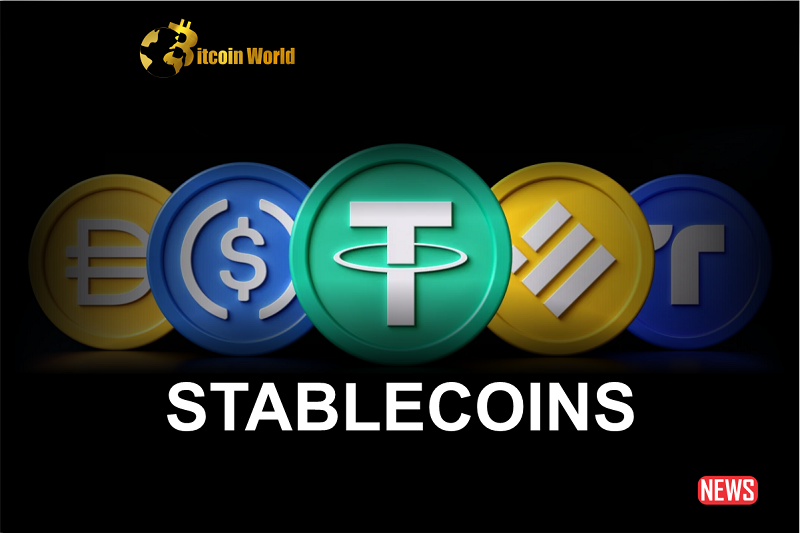
An opinion piece in The Wall Street Journal dated August 9th presents a compelling argument for stablecoins to serve as a transformative force in preserving the U.S. dollar’s dominance on the global stage. Authored by Brian Brooks, with significant fintech experience, and Charles Calomiris, a renowned economist, the article highlights the need for a comprehensive regulatory framework for stablecoins in the United States. This framework is seen as essential to secure the dollar’s international prominence in the face of emerging challenges.
The Clarity for Payment Stablecoins Act and Bipartisan Support:
The Clarity for Payment Stablecoins Act, championed by Patrick McHenry of the House Financial Services Committee, seeks to establish safeguards for stablecoins’ potential. While enjoying bipartisan support, the legislation has faced resistance due to a lack of consensus. The authors emphasize the importance of creating the right regulatory environment to enable the technology to flourish and contribute to the dollar’s global strength.
Stablecoins’ Potential to Preserve Dollar’s Supremacy:
With concerns about the gradual erosion of the dollar’s status as the world’s leading reserve currency, stablecoins emerge as a potential solution. The authors draw parallels with the post-World War II era when the dollar became the primary global trade currency. They highlight data from the International Monetary Fund showing a decline in foreign central banks’ U.S. dollar reserves, suggesting a need to fortify the dollar’s position.
Challenges Faced by the Dollar:
Brooks and Calomiris point out that major commodity trading nations like Brazil and Argentina are moving away from the dollar. These countries have established trade settlements with China using their local currencies, indicating a shift in currency preferences. In this context, stablecoins can offer individuals in hyperinflationary economies a more accessible path to the U.S. dollar.
Importance of Stablecoin Oversight:
The authors stress the potential negative consequences of dedollarization for the U.S. economy. Loss of reserve currency status could lead to increased borrowing costs during periods of extensive government borrowing and spending. Additionally, the purchasing power of American consumers might be affected, leading to higher costs of imported goods.
Empowering Global Citizens with Stablecoins:
The authors anticipate a scenario in which global citizens, driven by their individual preferences, could independently increase demand for the dollar, irrespective of their governments’ positions. This phenomenon might emerge as stablecoins gain more traction in the global economy.
Brian Brooks and Charles Calomiris conclude by urging U.S. policymakers to recognize the significance of ensuring the dollar’s continued dominance in the global financial landscape. They argue that a well-regulated stablecoin ecosystem can play a pivotal role in safeguarding the dollar’s status, ensuring its resilience against emerging challenges and contributing to the country’s economic stability and prosperity.
- SEO Powered Content & PR Distribution. Get Amplified Today.
- PlatoData.Network Vertical Generative Ai. Empower Yourself. Access Here.
- PlatoAiStream. Web3 Intelligence. Knowledge Amplified. Access Here.
- PlatoESG. Automotive / EVs, Carbon, CleanTech, Energy, Environment, Solar, Waste Management. Access Here.
- PlatoHealth. Biotech and Clinical Trials Intelligence. Access Here.
- ChartPrime. Elevate your Trading Game with ChartPrime. Access Here.
- BlockOffsets. Modernizing Environmental Offset Ownership. Access Here.
- Source: https://bitcoinworld.co.in/stablecoins-anchoring-the-dollars-global-dominance-amidst-economic-evolution/
- 11
- 12
- 9th
- a
- About
- accessible
- act
- Additionally
- affected
- Against
- American
- amidst
- and
- anticipate
- ARE
- Argentina
- argue
- article
- as
- AUGUST
- authors
- away
- BE
- bearish
- became
- bipartisan
- BitcoinWorld
- Borrowing
- Brazil
- brian
- by
- CAN
- central
- challenges
- Charles
- China
- Citizens
- clarity
- CO
- committee
- commodity
- compelling
- comprehensive
- concerns
- conclude
- Consensus
- consequences
- Consumers
- context
- continued
- contribute
- contributing
- Costs
- could
- countries
- Creating
- currencies
- Currency
- curve
- data
- Demand
- Dollar
- dominance
- draw
- draws
- driven
- due
- During
- Economic
- economies
- economy
- ecosystem
- emerge
- emerging
- enable
- ensuring
- Environment
- era
- essential
- establish
- established
- evolution
- experience
- extensive
- Face
- faced
- far
- financial
- financial services
- fintech
- For
- force
- foreign
- Framework
- from
- fund
- Futures
- gain
- Global
- Global economy
- global financial
- global trade
- goods
- Government
- gradual
- hack
- has
- Have
- headed
- higher
- Highlight
- highlights
- House
- HTTPS
- ii
- importance
- in
- Increase
- increased
- independently
- individual
- individuals
- interest
- International
- irrespective
- Is
- ITS
- journal
- lack
- landscape
- lead
- leading
- Legislation
- like
- local
- loss
- major
- mchenry
- might
- monetary
- more
- moving
- nations
- need
- negative
- of
- offer
- on
- open
- Opinion
- out
- Parallels
- path
- patrick
- payment
- periods
- phenomenon
- piece
- pivotal
- plato
- plato data intelligence
- platodata
- platogaming
- play
- Point
- policymakers
- position
- potential
- power
- preferences
- presents
- preserving
- primary
- prominence
- prosperity
- recognize
- Recover
- regulatory
- renowned
- reserve
- reserves
- resilience
- right
- role
- s
- safeguarding
- safeguards
- scenario
- Scenarios
- SEC
- secure
- seeks
- seen
- serve
- Services
- settlements
- Shiba
- shift
- significance
- significant
- solution
- Spending
- Stability
- stablecoin
- Stablecoins
- Stage
- States
- Status
- street
- strength
- stress
- support
- tag
- Technology
- that
- The
- the international
- the wall street journal
- their
- These
- they
- this
- to
- traction
- trade
- Trading
- transformative
- u.s.
- United
- United States
- urging
- using
- volume
- vs
- Wall
- Wall Street
- Wall Street Journal
- war
- when
- while
- with
- Worlds
- zephyrnet











